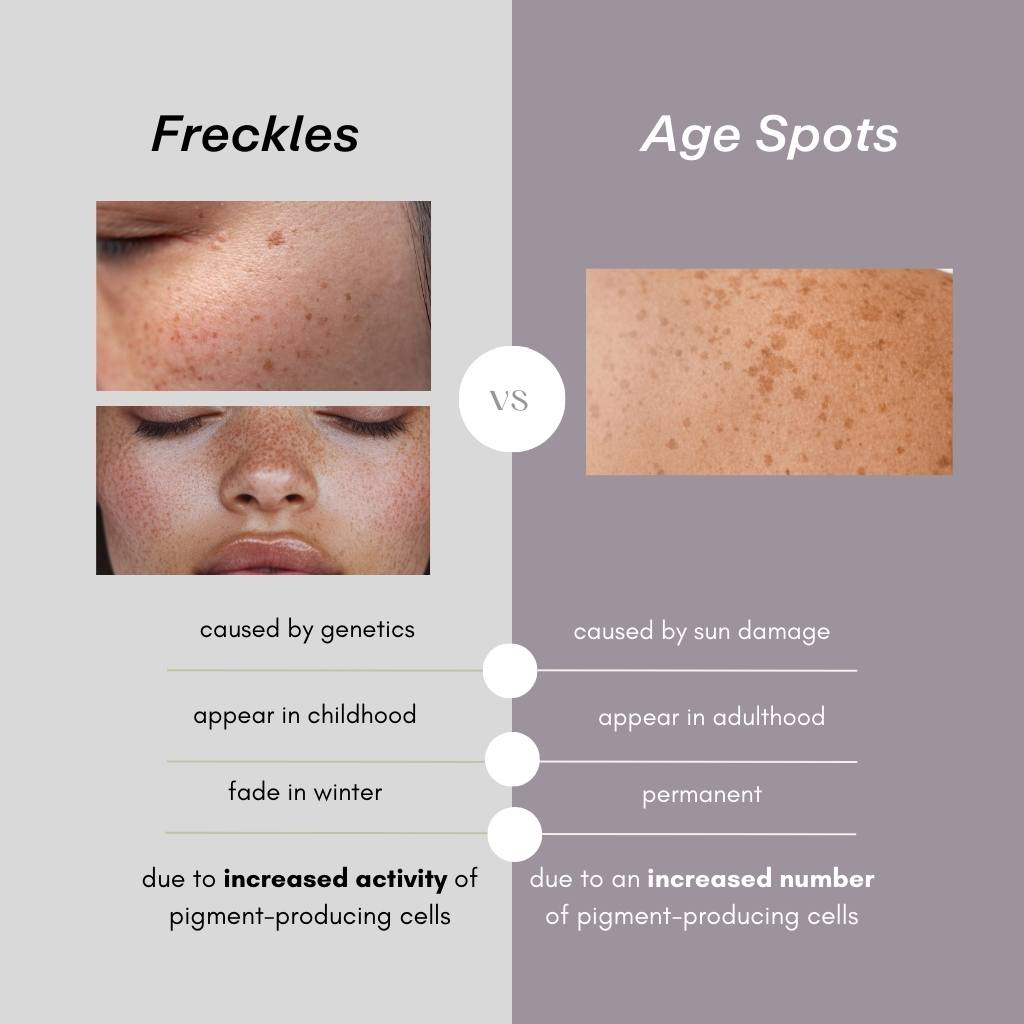
Freckles vs. Age Spots: Origins & Differences
Now that we know the basics of what hyperpigmentation is (from part 1), it’s time to put on our detective hats and get specific. The world of dark spots is more diverse than you might think, and figuring out which one you have is the first step toward effective treatment.

When you see a small brown spot on your skin, it’s easy to assume they’re all the same, but the key to telling the difference between a freckle and an age spot lies in their origin and behavior. While both are triggered by sun exposure, they are distinct skin conditions.
Key Differences at a Glance
Cause: Freckles are a genetic trait; age spots are a sign of long-term sun damage.
Age of Appearance: Freckles appear in childhood; age spots appear in adulthood.
Longevity: Freckles fade in the winter; age spots are permanent unless treated.
Melanocytes: Freckles are a result of increased melanocyte activity; age spots are a result of an increased number of melanocytes.
Freckles (Ephelides)
Think of freckles as your skin’s genetic response to the sun. They are an inherited trait, most often appearing on people with fair skin and red or light hair.
- Freckles are caused by the melanocytes (the cells that produce pigment) simply working overtime in response to UV light, not by an increase in the number of these cells.
- This is why they tend to darken with sun exposure in the summer and then fade or disappear completely in the winter when sun exposure is reduced. They are not a sign of skin damage and are generally considered a charming feature
Age Spots (Solar Lentigines)
Age spots are a direct result of cumulative sun damage over your lifetime. Unlike freckles, these spots are a sign of photoaging.
- They are caused by a localized increase in the number of melanocytes, which is why they are generally larger, darker, and have a more defined border than freckles.
- Because they are caused by a permanent change in cell count, they do not fade away in the winter.
- They usually start appearing in adulthood, typically on areas that have had the most sun exposure, such as the face, hands, forearms, and chest.
No matter the spot, prevention is key. Both are signs of sun exposure. Remember to wear your sunscreen daily!
